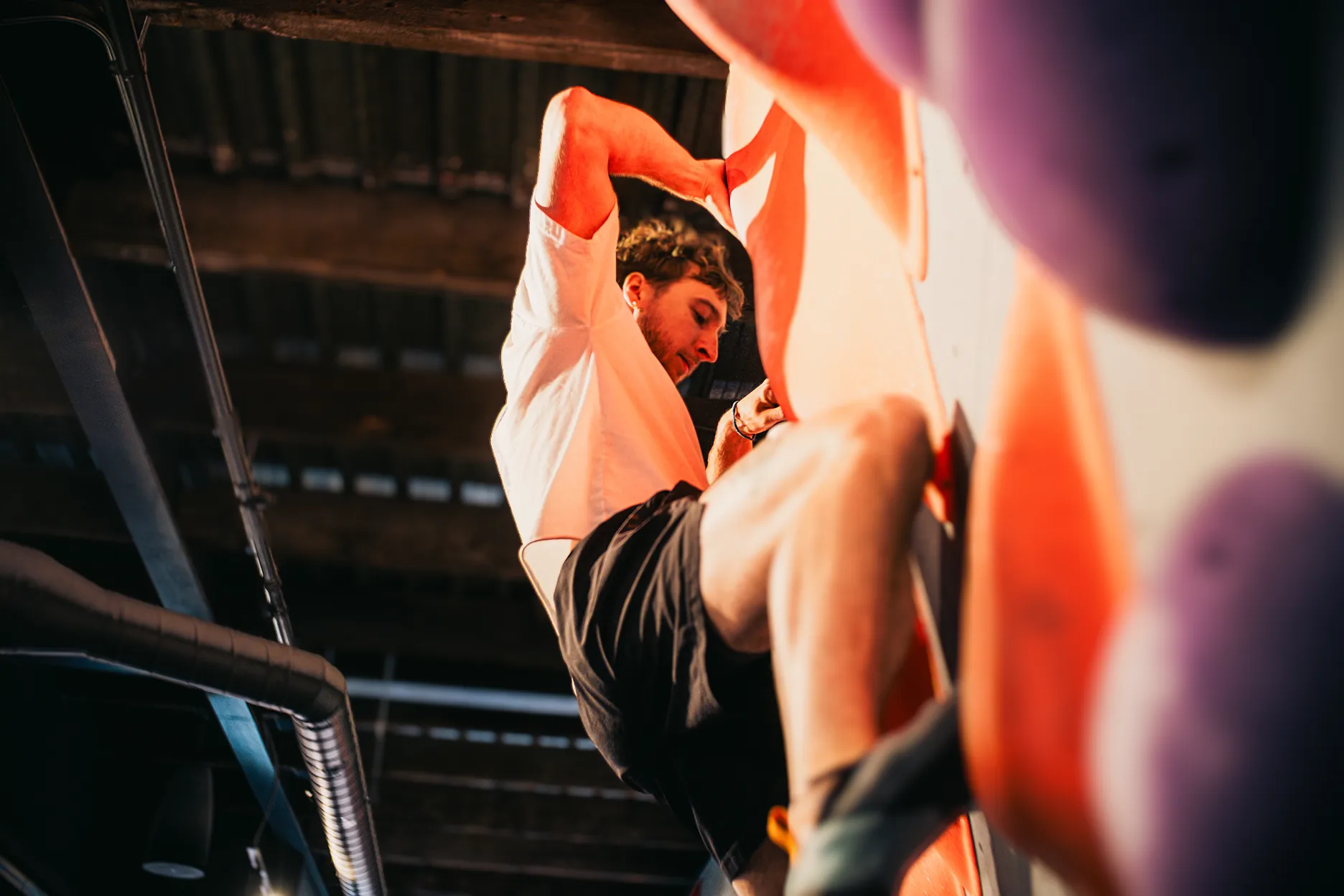Forearm tendinitis (right and left), pulled back muscles, abused pulleys, biceps tendon rupture, clicking shoulder. I might be forgetting a few. A good way to prevent climbing injuries? Listen to a veteran who’s had more than a few and knows what to do (and what not to do).
Since I’m just a humble writer, I asked physiotherapist Julien Deschesnaux to share some tips and confirm a few things.
Quick note: if you’re currently dealing with an injury, this text is not medical advice. Go see a doctor or a specialist who can help. You’ll get back to climbing faster than just “waiting it out.”
Understanding the Most Common Injuries
In sport climbing and bouldering, injuries often result from repetitive strain rather than direct trauma. According to a study published in the British Journal of Sports Medicine, over 75% of climbing injuries are overuse injuries, primarily affecting fingers, shoulders, and elbows.
These injuries can sometimes be linked to poor technique, but more often to progressing too quickly, inadequate warm-ups, or insufficient recovery.
How to Prevent Injuries: Warm Up, Warm Up, Warm Up
You’ll always see me warming up before touching a single hold at the gym or even outdoors—okay, I might brush a hold or two, but I won’t actually climb before warming up. Why? Because it’s the best way to prevent a ton of injuries. And I don’t want to add to my collection…
Climbing cold is one of the most common mistakes among beginner climbers—and even experienced ones. A proper warm-up raises your overall body temperature, activates your joints, and gets your fingers ready for the work ahead.
Julien the physio recommends tailoring your warm-up to the style of climbing you’re about to do. Planning to go hard on the Kilter Board? Aim for dynamic warm-ups. Heading into a slab session (ugh)? Make sure to warm up your hips and calves thoroughly.
A solid warm-up in a few simple steps: a few minutes of cardio (bike, jog, or rower), some dynamic stretching, and some finger activation. Then do a few easy boulders or routes to get your engine running.
Climb… but Not Too Much
How many times a week should you climb? How long should you project a boulder at your limit? And how many actual quality attempts do you have? Probably fewer than you think.
The best sessions are the ones where you don’t get injured because you didn’t push too far. And the best climbing weeks are those where you respect your body (i.e., not climbing seven days in a row).
Example: you’re obsessed with your current project and you do 15 tries with little rest between each one, several times a week. You’re setting yourself up for an injury.
Progress in climbing isn’t linear. Gradual overload is key, but your body needs time to adapt.
Julien suggests starting your session with a boulder you can climb fluidly and easily. If after 30 minutes you’re still cruising through it, you’ve got energy left in the tank. If not, your body’s already tired—and it’s not going to get better from there.
Pro tip: Keep a little notebook or use a training app. Track your sessions, your sensations, any pain. It’s a great tool to anticipate fatigue or adjust your workload.
Climb… at the Right Pace
Let’s use a running analogy: if you’re a long-distance runner, would you jump into the Olympic sprint? Same idea with climbing: if you’re not used to crimping on tiny edges, you need to build up to it gradually.
If you’re used to a certain style (like vertical climbing with small holds), you can push your limits there. But trying similarly graded problems on steep overhangs with powerful moves might be beyond your physical limit.
Julien’s tip: before a session, test what size hold you can hang from comfortably for 10 seconds. If you can hold a 15 mm edge, don’t try dynamic moves on 8 mm crimps. That’s a great way to get injured.
Climb… but Protect Yourself
Climbing is great. Climbing without pain because you’ve prevented injury? Even better.
Adding a few small exercises to strengthen vulnerable areas can significantly reduce the risk of chronic injuries. The kind of long-term commitment you definitely want to avoid…
- Shoulder strengthening: external rotations with bands, lower trapezius work
- Light finger exercises: very light hangboarding (for experienced climbers), resistance bands, stress ball
- Mobility work: active stretching, myofascial release
- Climb… by Listening to Your Body
A sore finger, a catching shoulder, a tight hip. If something feels off while you’re climbing, reduce intensity, take a rest day, and assess. Pushing through pain rarely ends well.
If pain lasts more than three days despite rest, go see someone who knows what they’re doing. A few days—or even weeks—of lighter climbing or total rest is way better than being sidelined for months or years.
Climbing smart is climbing safe
A good warm-up, measured progression, reasonable frequency, and paying attention to your body are the keys to climbing longer and better. Rather than treating an injury, it’s way better to prevent one—with solid habits and a little common sense.


